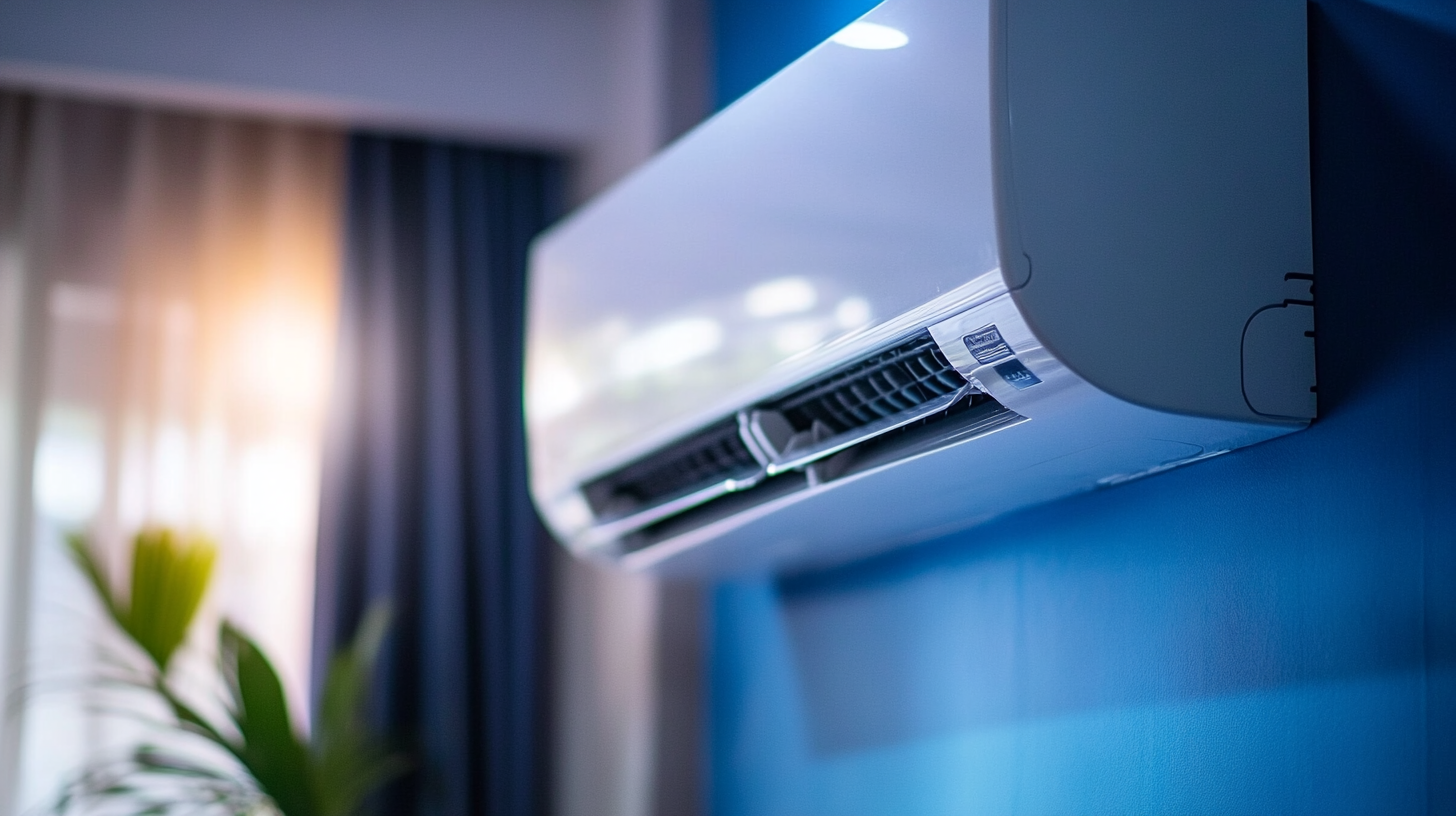




As we look towards the future, the air conditioner motor market is poised for significant transformation driven by technological advancements and changing consumer demands. According to a recent report by MarketsandMarkets, the global air conditioner motor market is expected to reach USD 15.6 billion by 2025, growing at a CAGR of 8.6% from 2020. Factors such as the increasing need for energy-efficient cooling solutions and the rising awareness of climate change are pushing manufacturers towards innovative motor designs that enhance efficiency and performance. This blog will explore key trends shaping the air conditioner motor market, including the integration of IoT technology, the shift towards brushless DC motors, and the adoption of sustainable practices to meet regulatory standards. By examining these insights and trends, stakeholders can better position themselves to navigate the evolving landscape of the air conditioner motor sector.

As we look towards 2025, the air conditioner motor market is poised for significant growth driven by increasing demand for energy-efficient solutions and rising global temperatures. According to a recent report by MarketsandMarkets, the global air conditioner motor market is projected to reach USD 22.5 billion by 2025, growing at a CAGR of 9.3%. This surge is primarily attributed to the increasing penetration of inverter air conditioning systems, which utilize advanced motors to enhance energy efficiency.
In addition to technological advancements, regional market dynamics will play a crucial role in shaping the demand for air conditioner motors. For instance, the Asia-Pacific region is expected to dominate the market, accounting for over 40% of the total share by 2025 due to rapid urbanization and rising disposable incomes in countries like India and China. Manufacturers should consider tailoring their products to meet the specific requirements of emerging markets, which often prioritize cost-effectiveness alongside efficiency.
**Tip 1:** When selecting an air conditioner motor, look for models that meet or exceed local energy efficiency standards. This not only helps save on electricity bills but also contributes to sustainability efforts.
**Tip 2:** Stay updated with the latest industry reports to understand shifting market trends and consumer preferences. This knowledge can inform product development and marketing strategies effectively.
By aligning with these trends and insights, businesses can position themselves strategically to capture the evolving demand for air conditioner motors in the coming years.
As the HVAC industry continues to evolve, technological innovations are playing a pivotal role in enhancing motor efficiency. One notable trend making waves is the rise of electrostatic motors, which represent a revolutionary leap in energy efficiency by harnessing advanced principles of physics to operate with significantly lower energy consumption. This reimagining of historical concepts not only pushes the boundaries of performance but also aligns with the increasing demand for sustainable and efficient HVAC solutions.
Furthermore, advancements in electric motor technology are driving market growth, particularly in energy-efficient systems. The integration of artificial intelligence and improved data governance tools is facilitating better management of product information, enabling HVAC companies to optimize their offerings. As the market for green HVAC continues to gain traction, with a projected 7.0% CAGR, these innovations are crucial for reducing carbon emissions while lowering operational costs, highlighting the industry's commitment to a smarter, more efficient future.
The air conditioner motor market is evolving rapidly, influenced significantly by stringent environmental regulations. As governments worldwide prioritize sustainability, manufacturers are rethinking motor design to enhance energy efficiency and reduce greenhouse gas emissions. The shift towards eco-friendly technologies is prompting innovations in materials and manufacturing processes, leading to the development of motors that not only comply with regulations but also offer improved performance and lower energy consumption.
In this dynamic landscape, we observe a trend towards integrating smart technologies into air conditioner motors. These advancements allow for better monitoring and control of energy use, further aligning with environmental mandates. The adoption of variable frequency drives and inverter technology is becoming increasingly common, enabling precise control over motor speed and optimizing power usage. As the market progresses toward 2025, players must navigate these regulatory demands while maintaining competitive pricing and exploring new design possibilities to cater to the environmentally conscious consumer.

The air conditioner motor market is witnessing significant growth across various regions, driven by advancements in technology and an increasing demand for energy-efficient solutions. In North America, the HVAC system market is projected to expand from $51.61 billion in 2025 to an impressive $75.75 billion by 2032, with a compound annual growth rate (CAGR) of 5.6%. This growth can be attributed to key players focusing on innovative strategies to enhance product performance and energy efficiency, aligning with the rising consumer expectations for eco-friendly solutions.

In the broader context, the HVAC equipment industry is set to reach $290.8 billion by 2030, indicating a robust market landscape that presents ample opportunities for stakeholders. The fan market is also anticipated to grow, with a forecast of reaching $16.9 billion by 2031, showcasing a significant CAGR of 5.9% in the pedestal fan segment alone. As various regions push towards optimizing their HVAC systems, the integrated servo motor market is also gaining traction, indicating a shift towards smarter, user-centric technology implementations in this sector.
As we look ahead to 2025, consumer preferences are significantly shaping the air conditioner motor market. Increasing awareness of energy efficiency has driven many users to favor motors that not only provide optimal cooling but also consume less power. This trend is particularly evident in inverter technology, which adjusts cooling levels based on room temperature and usage patterns. Such innovations appeal to environmentally conscious consumers who seek to reduce their carbon footprint while maintaining comfort in their homes.
Additionally, smart home integration continues to influence consumer choices. With the rise of IoT devices, buyers are opting for air conditioners that can be controlled remotely via smartphones or smart home systems. This desire for connectivity promotes the development of intuitive motor features that enhance user experience, such as automated scheduling and personalized cooling settings. As manufacturers respond to these demands, we can expect a shift towards motors that combine advanced technology with user-centric functionality, making 2025 a landmark year for the air conditioning industry.
| Feature | Consumer Preference (%) | Market Influence (%) | Projected Growth Rate (%) | Key Regions |
|---|---|---|---|---|
| Energy Efficiency | 75% | 85% | 6.5% | North America, Europe |
| Smart Technology Integration | 60% | 70% | 8.2% | Asia-Pacific |
| Noise Level | 65% | 75% | 5.9% | Europe, North America |
| Environmental Friendliness | 70% | 80% | 7.1% | Global |
| Affordability | 80% | 65% | 4.0% | Asia-Pacific, Latin America |


